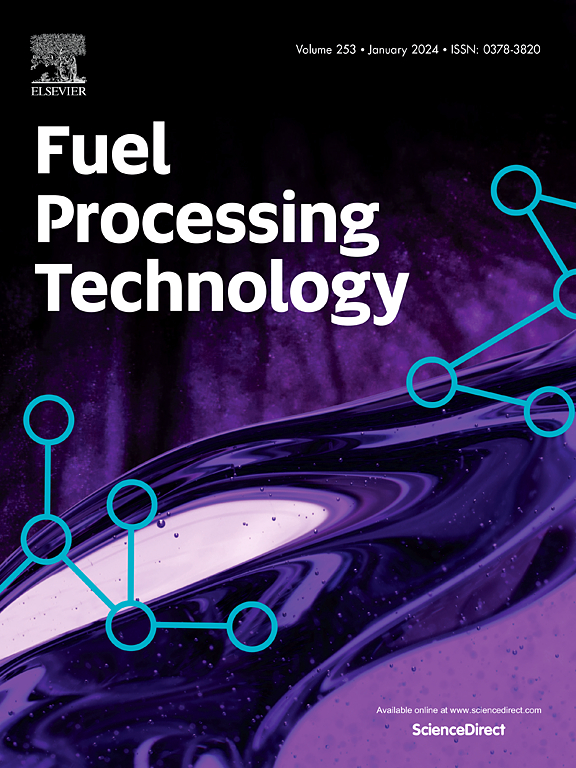Extraction of Ge and synchronous activation of humic acid in germanium bearing lignite via oxidation leaching
IF 7.2
2区 工程技术
Q1 CHEMISTRY, APPLIED
引用次数: 0
Abstract
Germanium-bearing lignite was a crucial source for Ge extraction; however, existing methods focus on extracting Ge from lignite by-products, which overlooked its abundant organic matters. Effectively extracting valuable elements from lignite and fully utilizing its organic resources are still significant challenges. In this study, a novel processing of recovering Ge and synchronous extracting humic acids in germanium-bearing lignite via oxidation leaching was proposed. A Ge extraction recovery of 73.93 % was achieved using a L/S ratio of 10 and 5 % nitric acid at 90 °C for 30 min. The effects of nitric acid on the activation and depolymerization of lignite samples were also analyzed. The results demonstrated that HNO3 pretreatment significantly enhanced humic acid yield, increasing it from 28.73 % to 71.32 % in lignite. The mechanism of Ge oxidation leaching in lignite was investigated, which could be divided into four stages due to the migration and transformation behavior of germanium. In addition, a new technical route for the efficient and high recovery of strategic rare metals Ge and organic resources humic acid in lignite was proposed. The research establishes a foundation for the extraction of valuable metal elements and the efficient utilization of organic resources in lignite.

氧化浸出含锗褐煤中锗的萃取及腐植酸的同步活化
含锗褐煤是提取锗的重要来源;然而,现有的方法主要是从褐煤副产物中提取锗,忽略了其丰富的有机质。有效提取褐煤中有价元素并充分利用其有机资源仍然是一个重大挑战。提出了一种氧化浸出法从含锗褐煤中回收锗并同步提取腐植酸的新工艺。在L/S比为10和5%的硝酸条件下,在90°C条件下提取30 min, Ge的提取回收率为73.93%。分析了硝酸对褐煤样品的活化和解聚的影响。结果表明:HNO3预处理显著提高了褐煤中腐植酸的产率,腐植酸产率由28.73%提高到71.32%;研究了锗在褐煤中的氧化浸出机理,根据锗在褐煤中的迁移转化行为,将氧化浸出过程分为4个阶段。提出了从褐煤中高效、高回收战略性稀有金属锗和有机资源腐植酸的新技术路线。该研究为褐煤中有价金属元素的提取和有机资源的高效利用奠定了基础。
本文章由计算机程序翻译,如有差异,请以英文原文为准。
求助全文
约1分钟内获得全文
求助全文
来源期刊

Fuel Processing Technology
工程技术-工程:化工
CiteScore
13.20
自引率
9.30%
发文量
398
审稿时长
26 days
期刊介绍:
Fuel Processing Technology (FPT) deals with the scientific and technological aspects of converting fossil and renewable resources to clean fuels, value-added chemicals, fuel-related advanced carbon materials and by-products. In addition to the traditional non-nuclear fossil fuels, biomass and wastes, papers on the integration of renewables such as solar and wind energy and energy storage into the fuel processing processes, as well as papers on the production and conversion of non-carbon-containing fuels such as hydrogen and ammonia, are also welcome. While chemical conversion is emphasized, papers on advanced physical conversion processes are also considered for publication in FPT. Papers on the fundamental aspects of fuel structure and properties will also be considered.
 求助内容:
求助内容: 应助结果提醒方式:
应助结果提醒方式:


